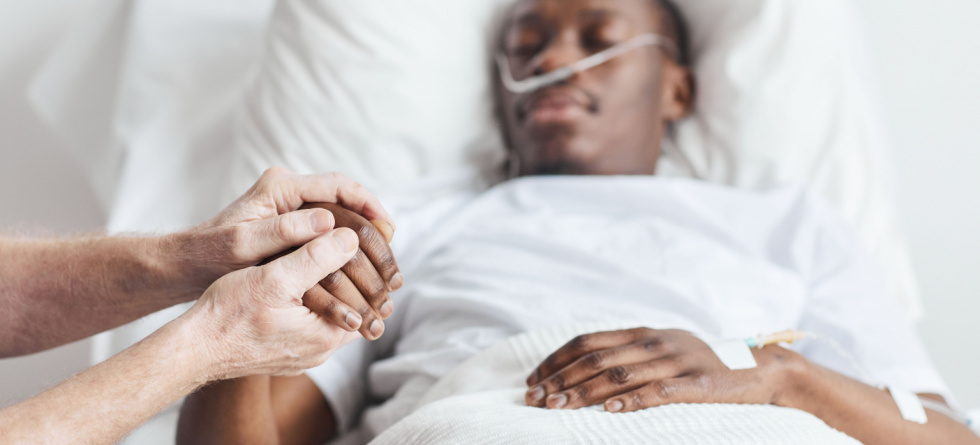What Happens in the Final Moments Before Death?
The final moments of life are unique for every individual, and the experience can vary greatly depending on the circumstances surrounding the death. For those who are caring for a loved one, understanding the signs and processes that typically occur can help provide comfort and peace during this profound moment.
At Devoted Helpers in Sugar Land, Texas, we provide compassionate end-of-life care, helping families understand the physical and emotional aspects of dying. Whether you’re dealing with a loved one in hospice care or offering care at home, it’s important to know what to expect in the final moments before death.
The Physical Signs in the Final Moments
As death approaches, the body undergoes significant changes, signaling the end of life. These physical signs can often be observed in the hours or minutes before death.
Decreased Consciousness and Alertness
In the final moments, many individuals become less responsive and spend more time sleeping. This state of decreased alertness is a natural part of the dying process. Some people may have difficulty staying awake or alert, and it’s common for them to drift in and out of consciousness. In some cases, people may even become non-responsive, though they may still be able to hear or feel the presence of loved ones.
Irregular Breathing Patterns
Breathing becomes irregular as death nears, and individuals may exhibit the following signs…
- Cheyne-Stokes Respiration – This is characterized by cycles of rapid, shallow breaths followed by long periods of no breathing or very shallow breathing.
- Apnea – The person may stop breathing for brief moments before resuming. This is completely natural and a sign that the body is preparing for the end.
As death draws closer, breathing may become more labored, and eventually, the person will stop breathing entirely.
Changes in Skin Color and Temperature
As blood circulation slows and the body begins to shut down, changes in the skin may become noticeable…
- Paleness or Bluish Tinge – The skin may become pale or have a bluish tint, especially in the extremities (hands, feet, or lips). This occurs because of reduced circulation and oxygen delivery.
- Cold Skin – The person’s skin may feel cooler to the touch as the body loses warmth. Hands, feet, and limbs may become colder, but the core temperature often remains higher for longer.
Weak Pulse and Low Blood Pressure
The heart slows down in the final stages of life, and blood pressure may drop significantly. As the heart becomes weaker, the pulse may become more difficult to detect, and in many cases, the heartbeat may become erratic before it ultimately stops. The weakened heart is no longer able to circulate blood effectively throughout the body, leading to a general slowing of bodily functions.
Loss of Control Over Bodily Functions
In the final moments, individuals may lose control over their bladder or bowels. This is a natural part of the dying process, as the body’s systems begin to shut down. In hospice care settings or at home, caregivers will be prepared to provide comfort and dignity to the individual during this time.
Terminal Lucidity or Energy Surge
Some individuals experience what is known as terminal lucidity or a “burst of energy” just before death. In this short period, the person may become unusually alert or exhibit an increase in energy. They may even have a clear conversation with loved ones, display improved awareness, or appear to “come back” for a brief moment. This phenomenon is often observed in people who have been unconscious or non-responsive for a long period.
While this surge of energy can be comforting for family members, it is usually short-lived, and the person may soon slip back into unconsciousness before passing away.
The Emotional and Psychological Experience
As death approaches, it’s common for both the person who is dying and their loved ones to experience a range of emotions. These emotions may fluctuate and be influenced by the individual’s physical state, spiritual beliefs, and relationship with death.
For the Person Dying
- Withdrawal – Many people begin to withdraw from their surroundings and may seem less interested in socializing or interacting with others. This may be part of the natural process of preparing for death, and it can be comforting for the person to retreat into their thoughts, emotions, or memories.
- Dreams or Visions – Some people near death report experiencing dreams, visions, or a sense of “seeing” loved ones who have passed. These experiences may be comforting or symbolic and are often associated with the process of transitioning to the afterlife.
- Spiritual Awareness – Some individuals may have heightened spiritual awareness in the final moments, feeling a sense of peace or connection with something greater than themselves. For many, this can provide comfort in the face of impending death.
For Family Members and Loved Ones
- Anticipatory Grief – Family members and friends often begin grieving before the person has passed, as they mentally prepare for the loss. This anticipatory grief can involve feelings of sadness, fear, or even relief, depending on the circumstances of the illness or condition.
- Feeling of Connection – Loved ones may feel a deep sense of connection to the person who is passing, even if they are unresponsive. Many people report a sense of peace or comfort in the final moments, especially when they have had the opportunity to express love, share memories, or say goodbye.
- Emotional Intensity – The final moments can bring intense emotional experiences for loved ones, ranging from sadness to acceptance. It’s important for family members to allow themselves to process these emotions and seek support as needed.
What Happens After Death?
Once death has occurred, there are several physical and procedural changes that take place…
- Post-mortem Changes – The body begins to cool down, and rigor mortis (stiffening of the muscles) may set in. Other post-mortem changes, such as livor mortis (blood pooling), will also occur, which can help determine the time of death.
- Caregiver and Family Support – After death, caregivers and family members may be involved in making arrangements for the deceased person, such as contacting a funeral home or hospice team. Depending on the situation, they may also seek grief support from professionals.
The final moments before death are deeply personal and can vary greatly depending on the individual. While the physical process of dying may follow certain patterns, each person’s experience is unique. By understanding the common signs of the dying process, families can feel more prepared, and caregivers can provide the most compassionate and respectful care during this time.
At Devoted Helpers in Sugar Land, Texas, we specialize in end-of-life care and support. We provide hospice care, palliative care, and emotional guidance to families and individuals, ensuring that their loved ones experience a peaceful, dignified transition in their final moments.
If you or a loved one needs end-of-life care or emotional support during this difficult time, don’t hesitate to contact us for help and guidance.


